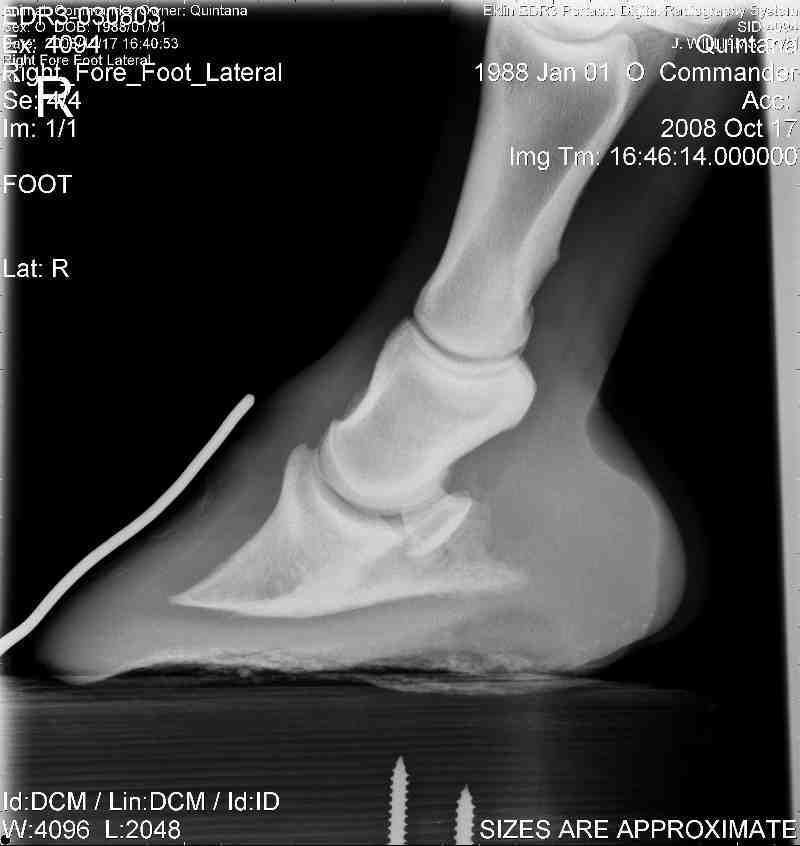Pedal Osteitis Caused by Severe Clubfoot (Commander)
I received a call from a desperate owner about an old retired gelding who wasn't able to walk anymore. What I discovered when I arrived was that his left front foot was severely clubfooted and that he couldn't stand on that foot to pick up his right front. He would actually try to bite me, he was so sore. I don't have photos of his feet before I started, but I decided to take photos to match them up with his radiographs of the bones inside his feet so that owners could see the damage caused by club feet to the bones. I cut down his heels (he was almost completely vertical in the dorsal hoof wall), took absolutely no sole in front of the frog, and used frog support pads, two-part silicone putty and copper sulfate to prevent thrush from growing under the pad. He immediately became ambulatory and could be seen moving all over his pasture area--even bucking and kicking once in a while--he felt so much better.
The immediate photo below is just before I took off shoes that I had applied 8 weeks earlier.
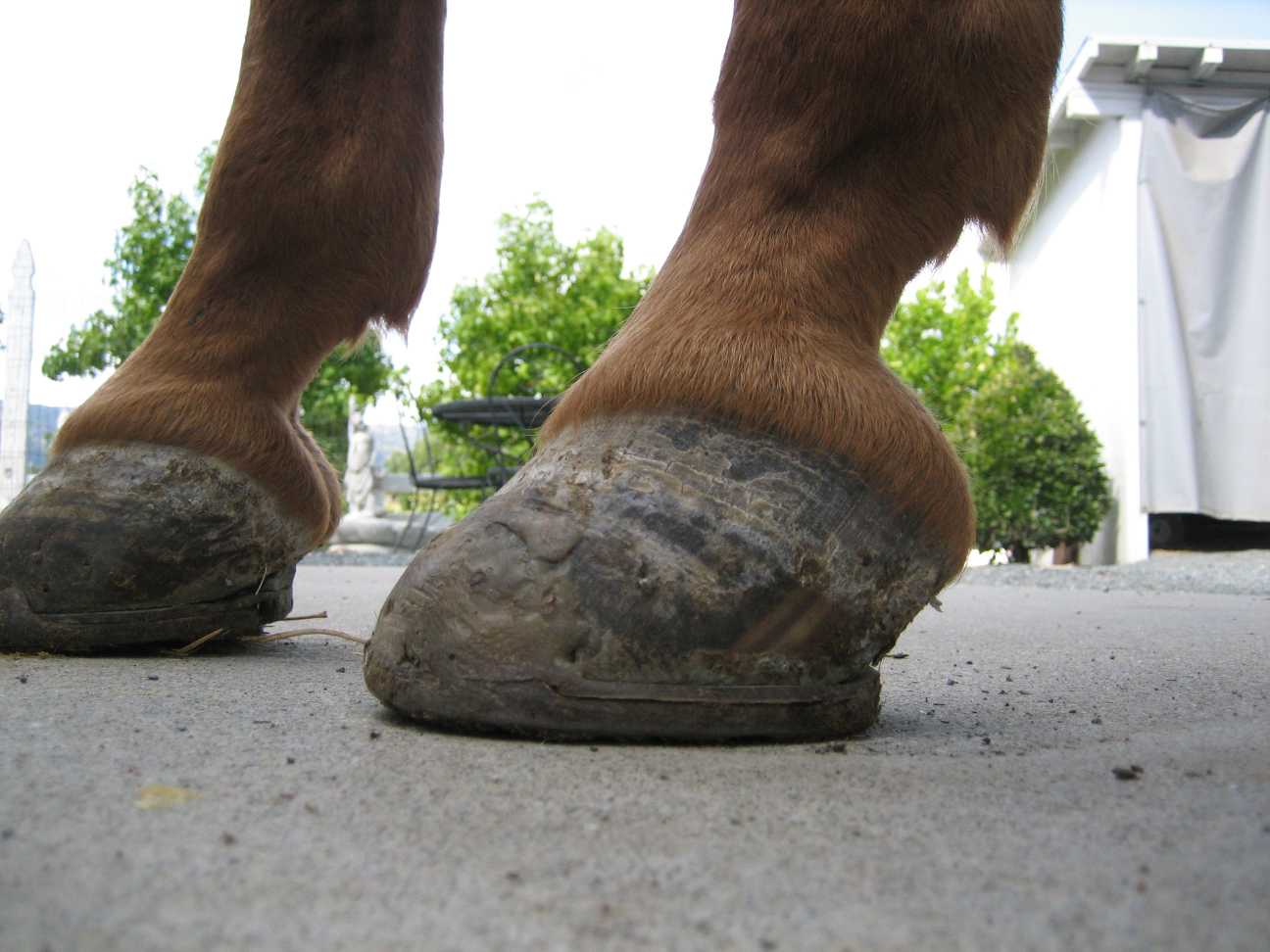
The shot below (8 weeks into a shoeing period) shows that the weight of the horse has been redistributed onto the frog from the ground through the pad and silicone putty. It was extremely important to get the weight off the toe because of the damage it was doing to the pedal bone. You will see what the past incorrect shoeing and trimming of this horse has done to the pedal bone in the radiographs at the bottom of this page.
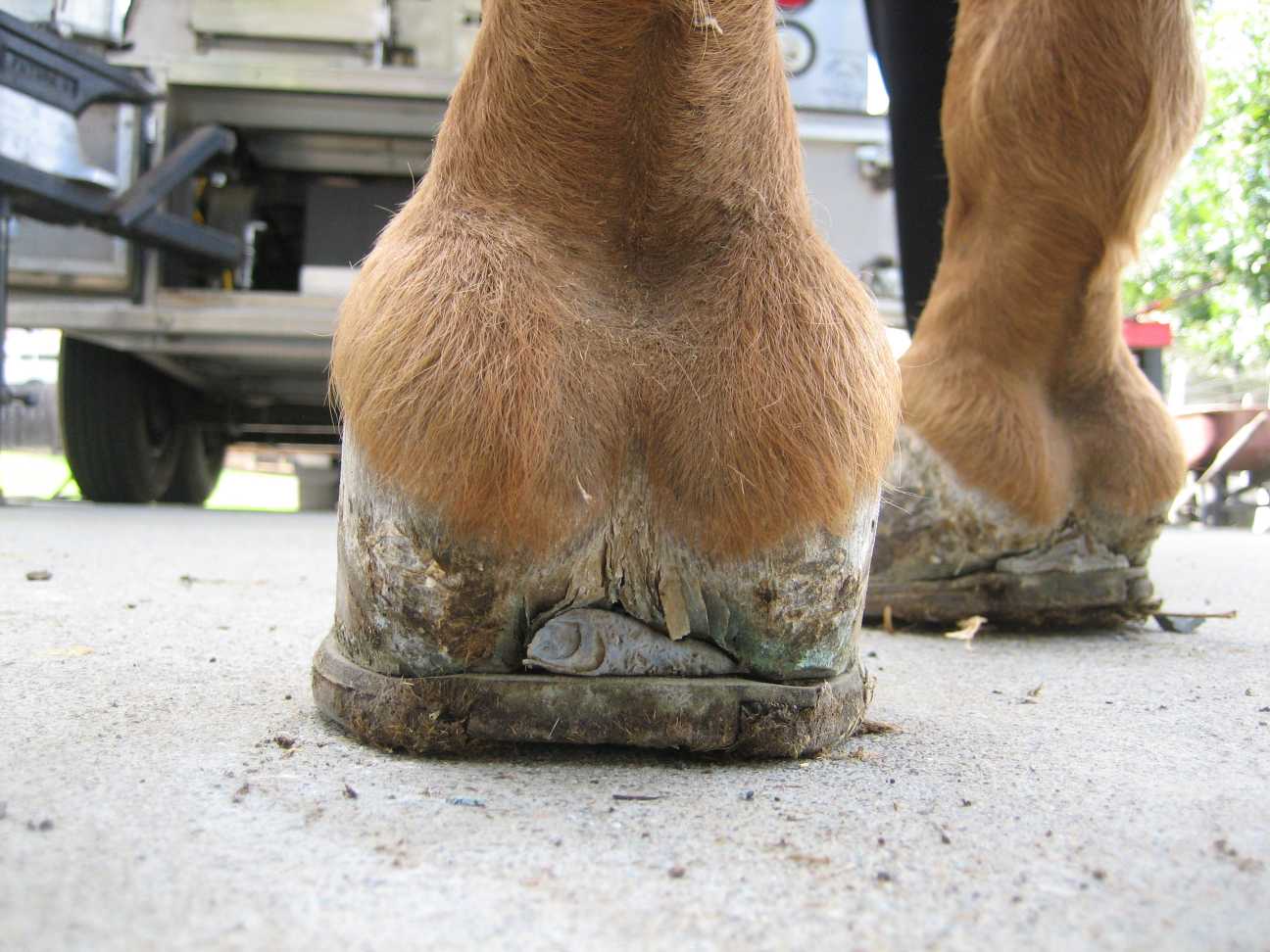
The photos below show the foot after I've trimmed it, and just before applying the package.
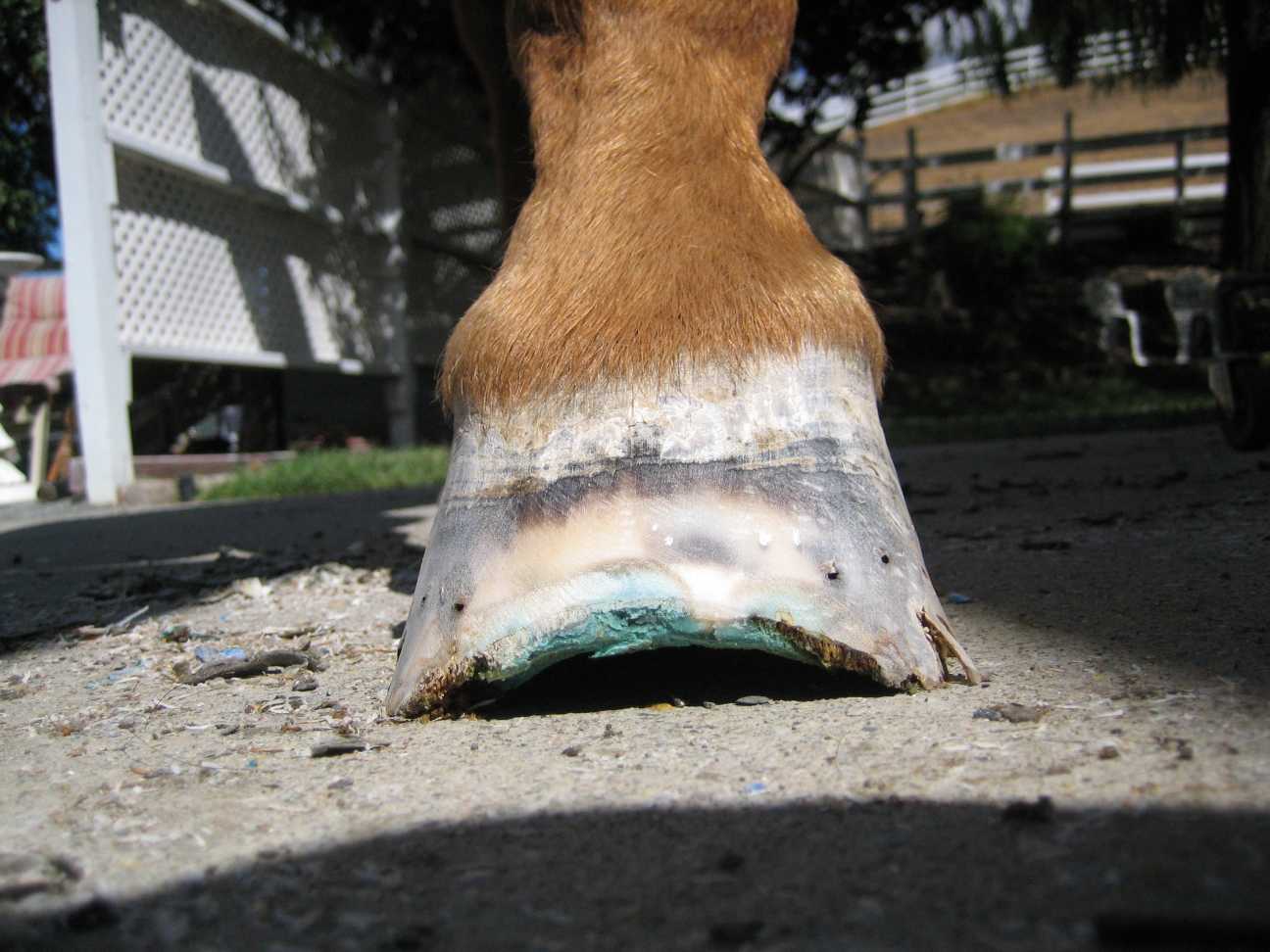
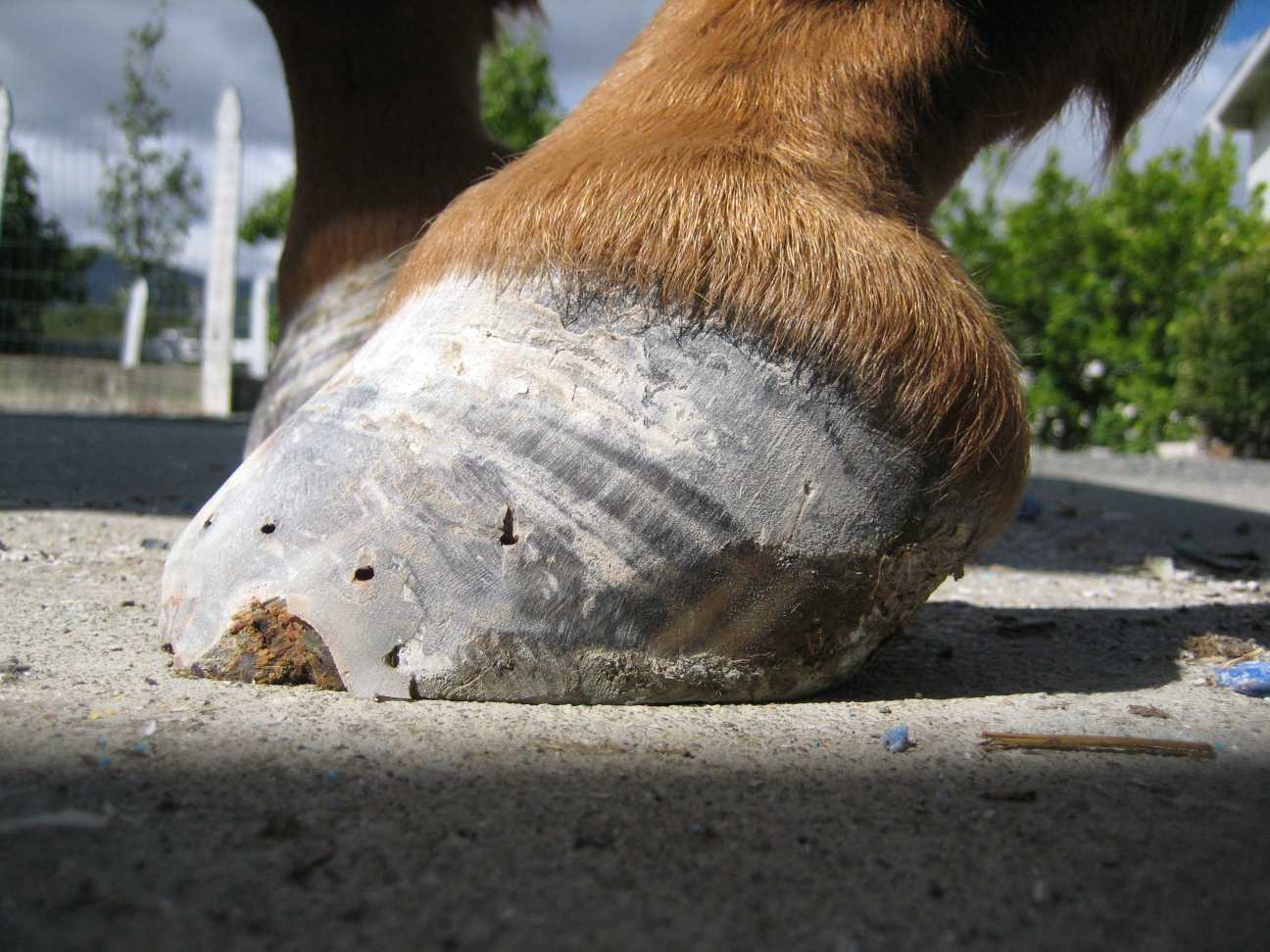
Looking from the back of the foot forward, notice how the front of the foot just dives off to the air. Without shoes and avoiding all trimming on the bottom of the foot forward of the apex of the frog, this horse would be standing on the tip of his pedal bone--as he did for many years.
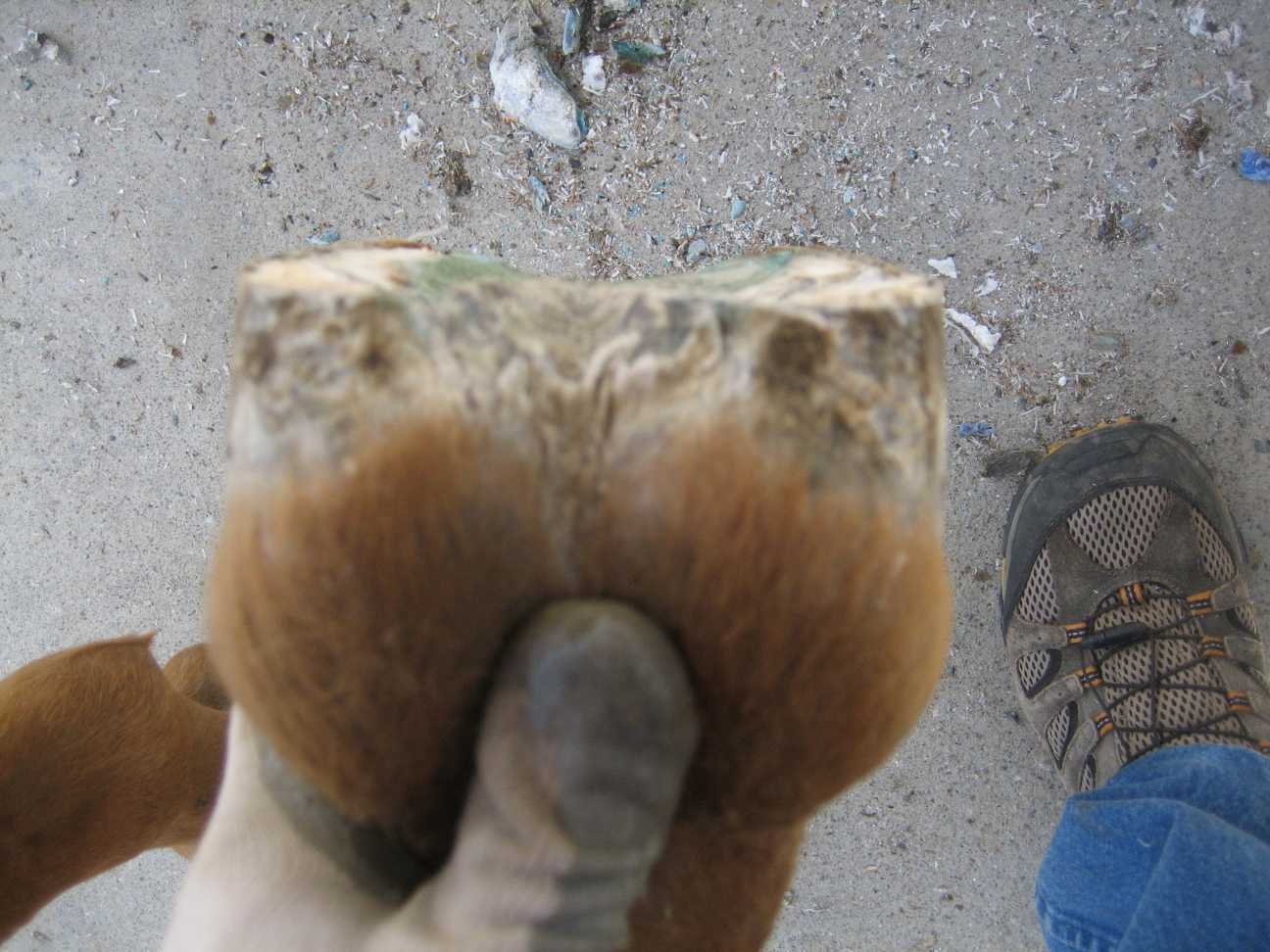
The blue residue is what's leftover from the copper sulfate that I put in 8 weeks ago. Notice the sole has been left untouched in this area. Only the heels of this horse are trimmed even though he now wears shoes and pads to protect his feet.
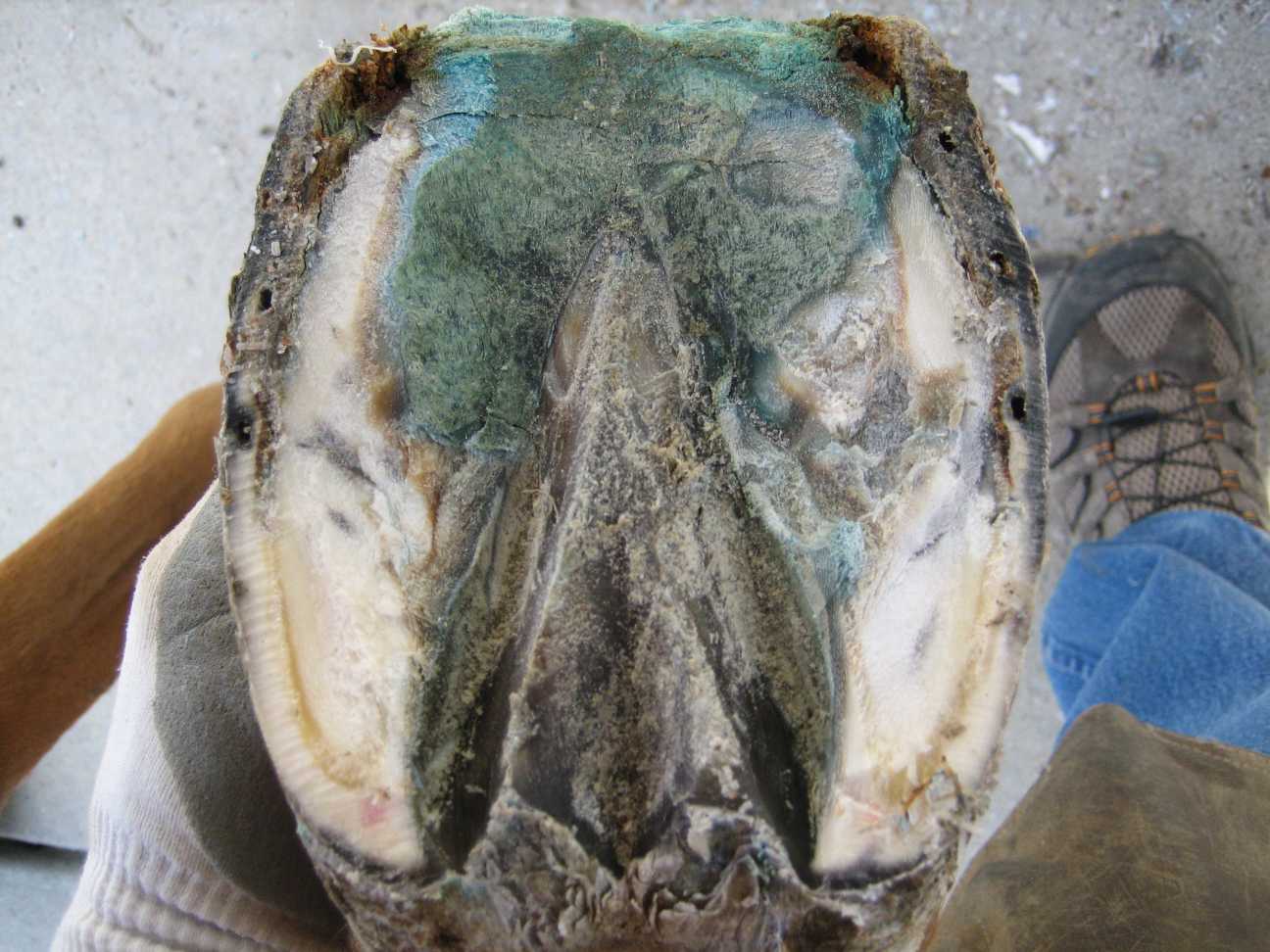
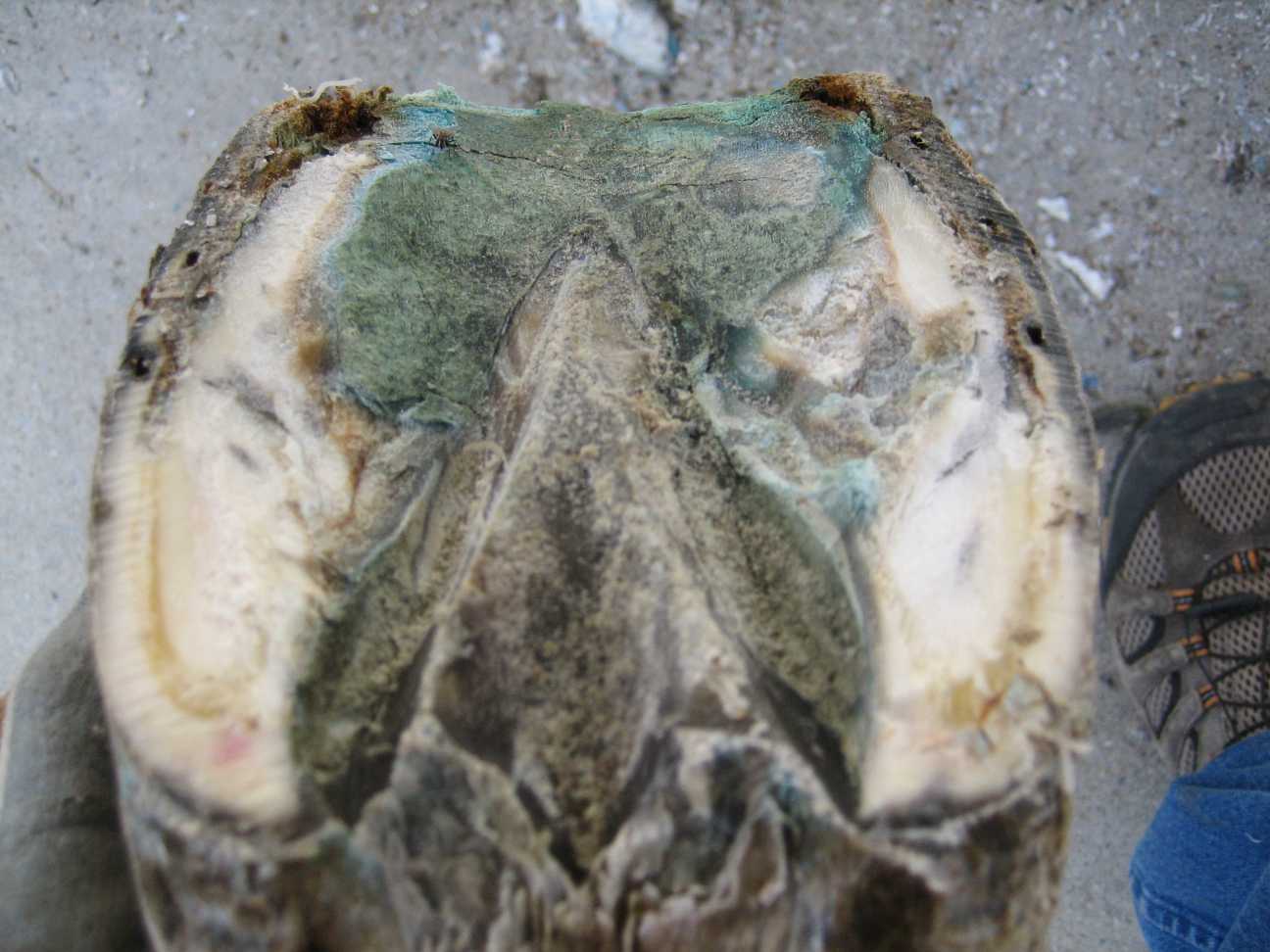
In the shot below, notice how much hoof wall is missing because the pedal bone is disintegrating within the foot. The hole will be filled in with the Vettec Superfast product as shown just below this photo.
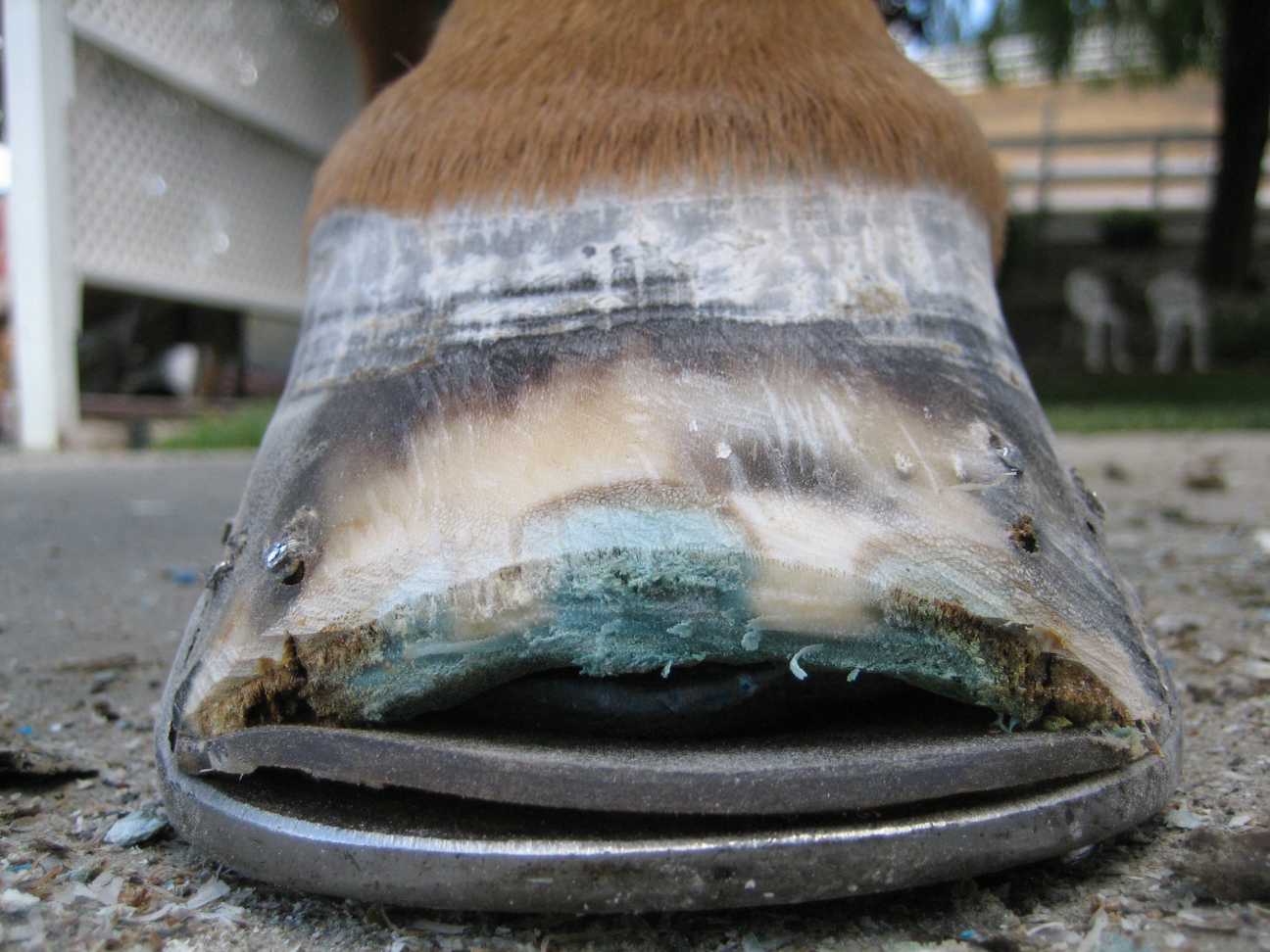
The front of the foot has been filled in with Vettec Superfast -- a product that I use as filler for missing hoof walls.
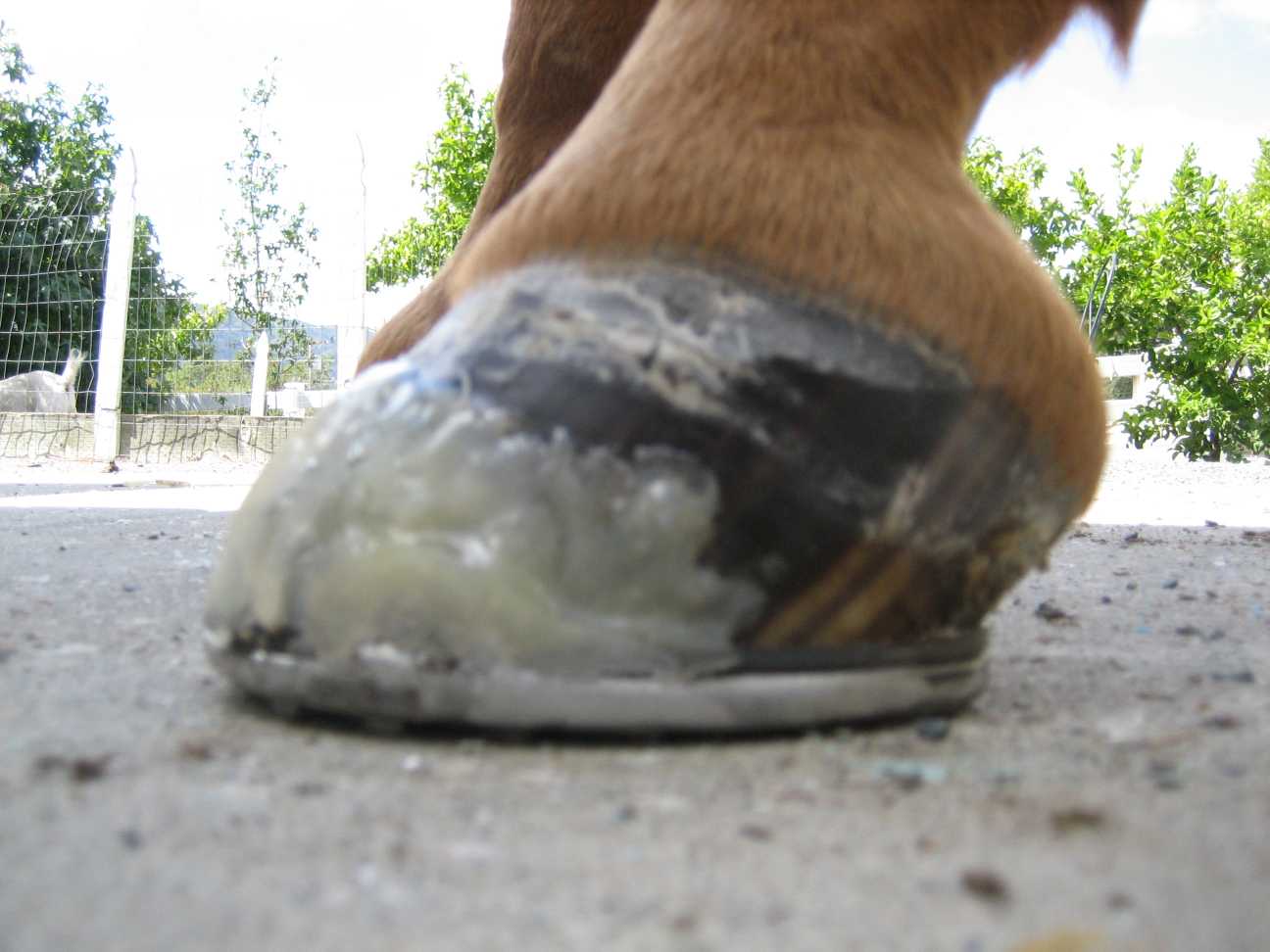
The radiograph below of the club foot show extreme pedal osteitis has developed. The bone is dissentigrating. This is very painful for the horse and is life threatening.
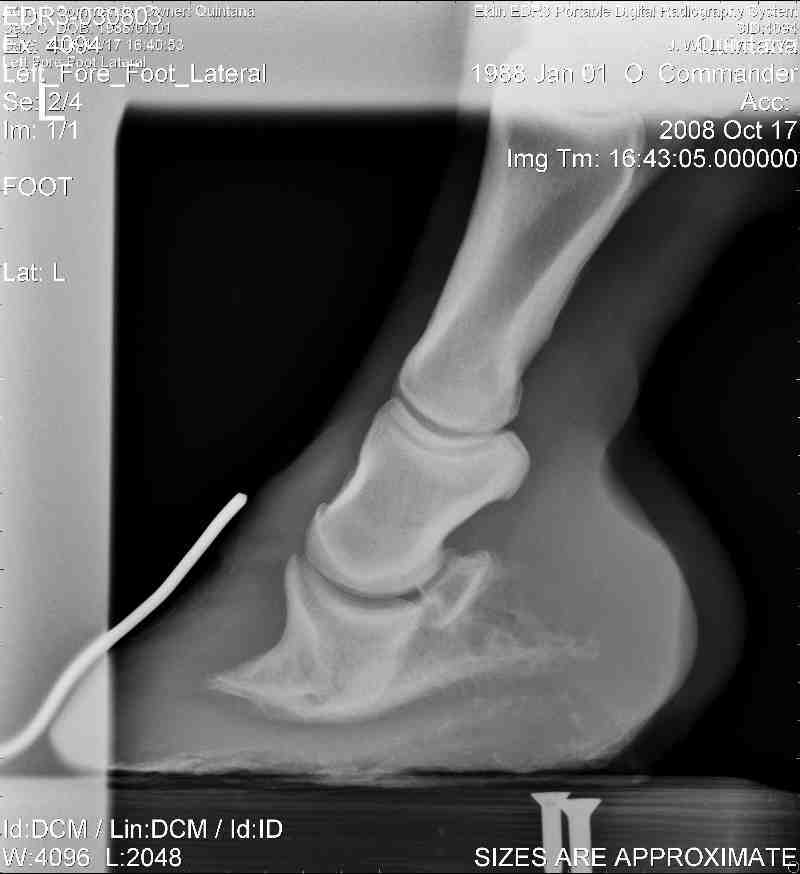
The right front radiograph shows a close-to-normal pedal bone. I say "close" because there is still lipping at the tip of the bone that would not be present in a truly healthy specimen.
